Growing carnivorous plants can be a thrilling experience, whether in your garden or inside your home.
Not only is their gruesome diet extremely interesting, but many of them are also gorgeously colored, providing a bright focal point in any indoor space or shadowy garden corner.
While we know these Frankenstein beauties enjoy a meaty diet, the question is, would they also eat roaches?
Would this be a great way to rid our homes of pesky roaches and other household bugs if they do?
Do carnivorous plants eat roaches? Carnivorous plants can eat roaches if their traps are large enough to accommodate the bug, but the roach would need to be weak and slow to be caught by the trap. Smaller carnivorous plants can usually only digest one roach at a time and will need to rest after the bug is fully digested.
Use the below guide to identify the exciting types of carnivorous plants that enjoy a balanced roach diet!
Carnivorous Plants That Eat Roaches (Best Options)
Roaches are generally hardy and sensitive to movement, and they feed on the ground. Therefore the possibility of one falling from above into a trap is not very likely.
However, roaches have been known to get caught in the traps of these meat-hungry plants at times.
In addition, the delicious scents some carnivorous plants exude can prove a little too tempting for the humble roach!
That said, these plants shouldn’t be used as means of ridding your home or indoor space of a roach infestation.
Instead, use eco-friendly methods such as citronella oil or a baking soda and sugar solution to get rid of roaches. With severe infestations, an exterminator may be your only option.
#1 Tropical Pitcher Plant (Nepenthes spp.)
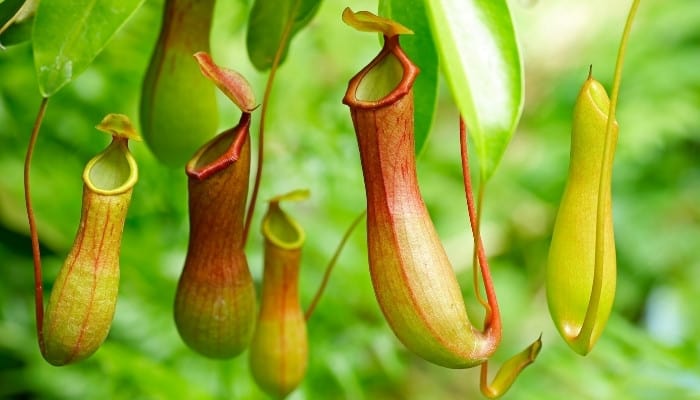
The many species of pitcher plant develop a pitcher-trap at the end of each leaf tendril. These traps can vary in size, color, and shape depending on the species.
In addition, this plant’s scent attracts roaches, which are then digested when they fall into the pitcher.
#2 American Pitcher Plant (Sarracenia spp.)
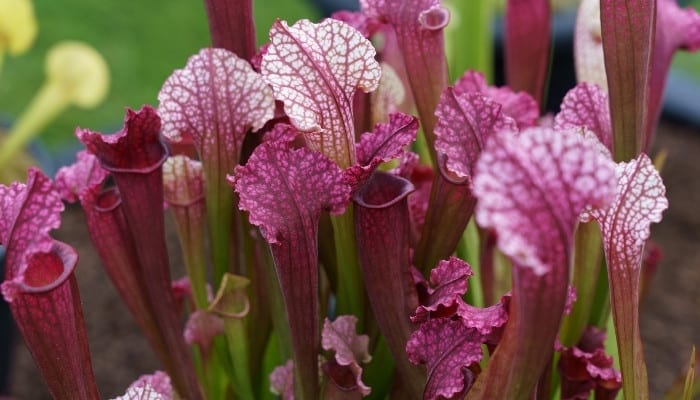
The medium pitchers of this plant can easily accommodate a decent-sized roach. In addition, their unique scent is attractive to roaches.
Once ensnared in the trap, the roach is easily digested.
#3 Butterwort (Pinguicula)
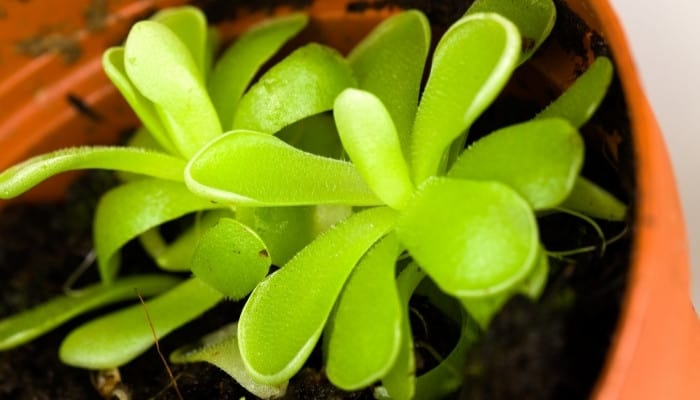
The sticky resin coating on the butterwort’s leaves entraps insects when they land on its foliage.
As the insect struggles to get free, the leaves secrete a digestive enzyme that helps the plant absorb nutrients from the bug.
Roaches are a favorite meal of the butterwort, but they can also feed on more than 100 different types of insects.
#4 Venus Fly Trap (Dionaea muscipula)
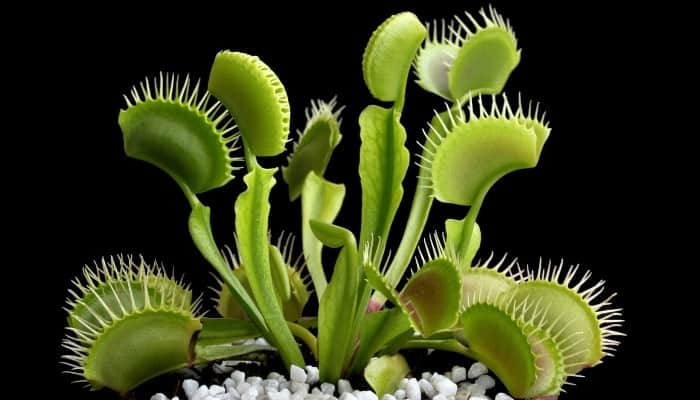
The Venus fly trap will happily devour roaches, but usually, the roaches must be small enough to easily fit into its traps.
The plant’s unique scent attracts cockroaches. When the roach enters the trap, it triggers a mechanism that snaps the trap shut, and the roach is digested over time.
#5 Cobra Lily/ California Pitcher Plant (Darlingtonia californica)
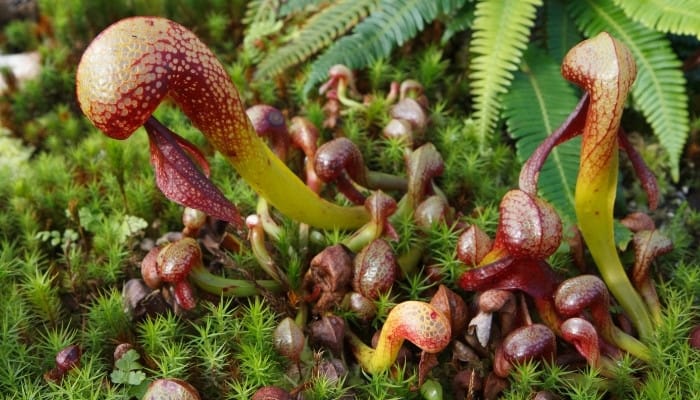
This unique plant bears an uncanny resemblance to a striking cobra. Unlike other pitcher plants, it does not use water to drown its victims.
Instead, it attracts insects, roaches, and even invertebrates with its distinct aroma. The insects cannot escape once inside the hood and gorging on the nectar.
The plant secretes digestive enzymes and absorbs the roach.
#6 Monkey Cups (Nepenthes)
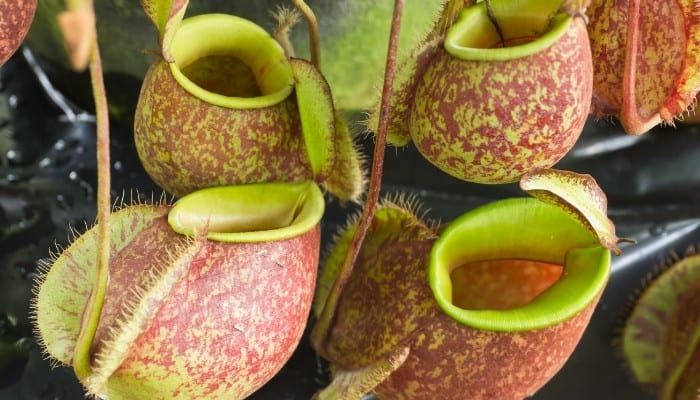
This tropical plant develops eye-catching pitchers filled with water. The nectar secretions and pitcher coloration are attractive to roaches and other insects.
Once they fall into the pitcher, the roach is dissolved by the digestive enzymes at the bottom of the pitcher.
#7 Sundew (Drosera spp.)
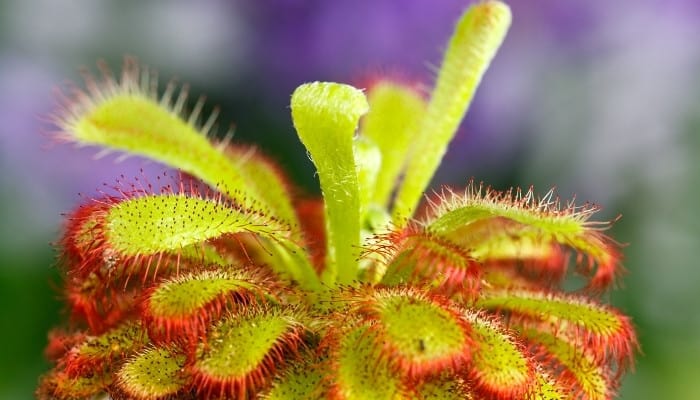
These brightly colored rosettes grow in the marshes and bogs of humid climates like Africa and Australia.
The sundews tentacles secrete nectar that is attractive to most insects, including roaches.
These hungry plants will dissolve and absorb any insect that sticks to its sticky fingers as long as it can’t get away.
#8 Yellow Pitcher Plant (Sarracenia flava)
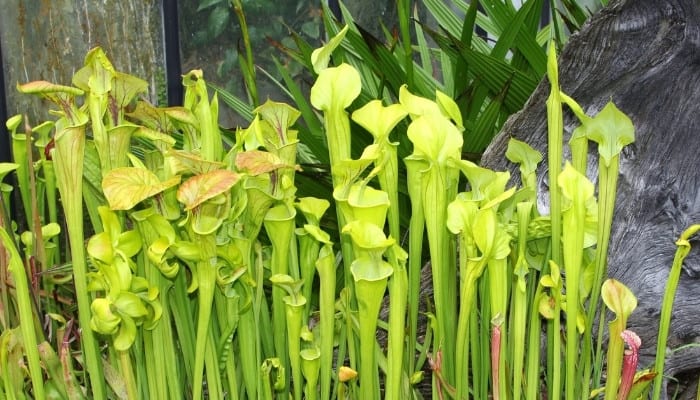
One of the tallest pitcher plant species, the yellow pitcher plant, has hollow pitchers that entrap insects.
The plant’s nectar attracts insects and hungry roaches into its pitchers; from there, they fall into the pitcher and are digested by the plant’s digestive enzymes.
While it may be unlikely to eat roaches in its natural environment, the yellow pitcher plant is more than capable of consuming a juicy roach!
Other Insects Carnivorous Plants Will Eat
Much like humans and animals, carnivorous plants enjoy variety in their diet and will happily consume many types of bugs, insects, and spiders.
Knowing which ones to feed to your monster-licious babies will ensure they remain happy and healthy.
- Gnats
- Flies
- Ants
- Spiders
- Moths
- Butterflies
- Wasps
- Beetles
- Centipedes
- Grasshoppers
- Mosquitoes
Related Questions:
Can You Feed Dead Bugs to Carnivorous Plants?
Most carnivorous plants will consume live and dead bugs. If the dead bug is placed in the trap or dropped into the pitcher, the digestive enzymes will break it down into nutrients for the plant.
However, the Venus Fly Trap is the exception and prefers its meals alive and kicking.
What Carnivorous Plant Eats the Most Bugs?
The sundew is one of the hungriest carnivorous plants around, happy to feed on just about anything that becomes stuck to its sticky tentacles.
Studies in Japan have shown that sundews growing in boggy areas steal the insects attracted by the flowers of nearby plants!
Conclusion
Carnivorous plants enjoy a varied diet of bugs and insects, including the unsuspecting roach. There’s nothing that gets their digestive juices flowing faster than a tasty bug treat.
However, overfeeding your carnivorous plants can result in death or possible disease.
Therefore when feeding your plants, ensure you provide food once every two to four weeks using suitable bugs, insects, and arachnids.
Lastly, human food, including raw meat, is not ideal for carnivorous plants as it can lead to the development of bacteria and mold, which will affect your plant’s health.

![Carnivorous Plants and Roaches: What To Know [+ Best Picks]](https://whyfarmit.com/wp-content/uploads/2022/01/Large-Sarracenia-close-up.jpg)